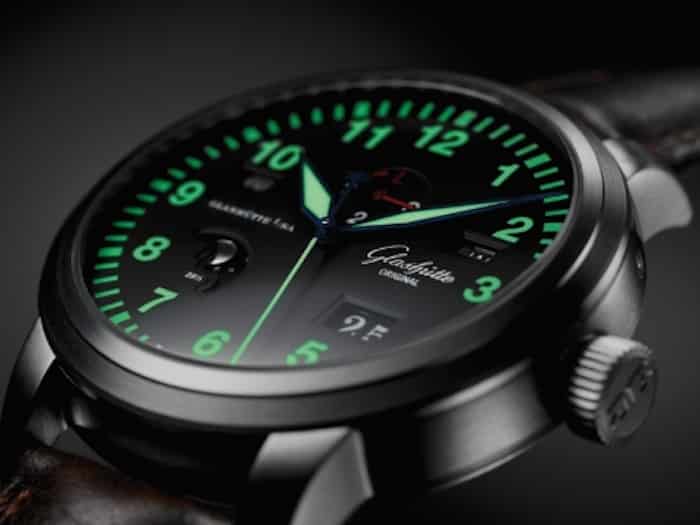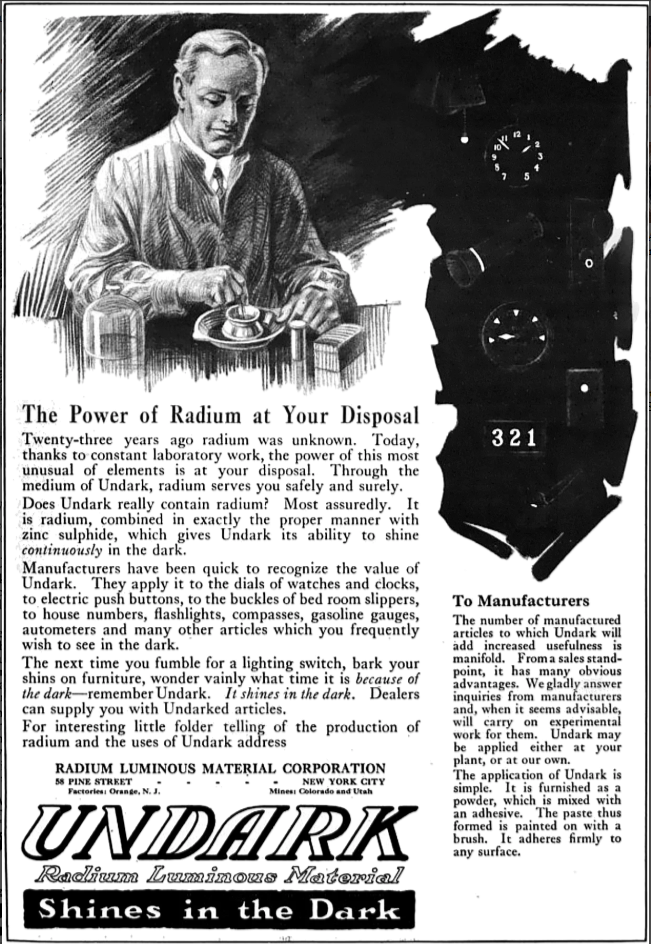In the beginning of the 20th century, scientists developed a way to mix “radium 226” with paint. This created ‘radioluminescent paint’. This breakthrough led to the new product being applied to clocks and telephones. Even airplane instrumentation panels (all now considered to be vintage), enabling the devices to glow in the dark.
However the new approach led to unforeseen circumstances. By 1925 a group of radium painters, later referred to as the Radium Girls, sued their employer over health issues. This was believed to be stemming from the ingestion of radium through a practice called ‘pointing’ their brushes. They would lick the ends of the brushes to refine the bristles into a point. Subsequently ingesting radium remnants from the brush. As a result, by 1930 ‘pointing’ brushes was no longer done by mouth and there were no more incidences of malignancy due to radium. This led most people to believe that radium was not a health risk provided you did not consume it.
Sixty years later researchers from the University of Northampton wondered whether since radium decays into radon gas, “vintage” clocks, watches, phones and such items, previously coated in radium paint could influence radon gas levels as the radium naturally decays.
The study was performed in a small bedroom and consisted of measuring the radon gas level for a baseline. Then adding 30 radium dial watches to the room to see how much the radon level would change, if at all. Upon retesting it was discovered that the room’s radon level rose to 134 times the level at which the EPA (United States Environmental Protection Agency) recommends action.
The data from this first study of its kind indicates a previously unconsidered risk. This was from owning, collecting, and storing radium dial watches or other items coated in radium-infused paint.
So keep calm, and think before you go vintage.








